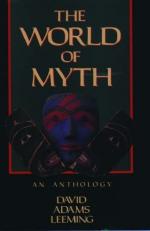
|
| Name: _________________________ | Period: ___________________ |
This quiz consists of 5 multiple choice and 5 short answer questions through Part III: Chapters 1-4.
Multiple Choice Questions
1. How does Leeming say the Chinese describe the flood?
(a) As a way to help cultivate the earth.
(b) As a way to purge a preliminary form of humanity.
(c) As an attempt to avert a war against the gods.
(d) As a punishment for sins against the gods.
2. What does Leeming say the Egyptian pantheon is centered on?
(a) Redemption.
(b) Death and resurrection.
(c) The balance between free will and fate.
(d) The possibility of self-fulfillment.
3. What does Leeming say the flood represents as a metaphor?
(a) Extreme guilt washing away with forgiveness.
(b) The cleansing effect of death on culture.
(c) The clean feeling after admitting wrong.
(d) The unconscious before experiencing rebirth.
4. Why does Leeming say cultures give human form to Supreme Beings?
(a) Because they cannot express the sublimity of existence without giving it a human face.
(b) Because a Supreme Being protects them from the night.
(c) Because they do not understand anything beyond human limitations.
(d) Because humans tend to see their virtues as outlasting them.
5. Which narrative is not an aspect of cosmogony?
(a) The creation of humankind.
(b) Explanation of natural phenomena.
(c) How the universe was developed.
(d) The fall from the state of perfection or grace.
Short Answer Questions
1. What does Leeming say Isis is the goddess of?
2. What does Leeming say Horus represents, in the Egyptian pantheon?
3. Why mystery does Leeming address with regard to human creation?
4. For what does Leeming say the gods are metaphors?
5. What was the young girl in the Water Jar Boy myth doing when she got pregnant?
|
This section contains 339 words (approx. 2 pages at 300 words per page) |

|




